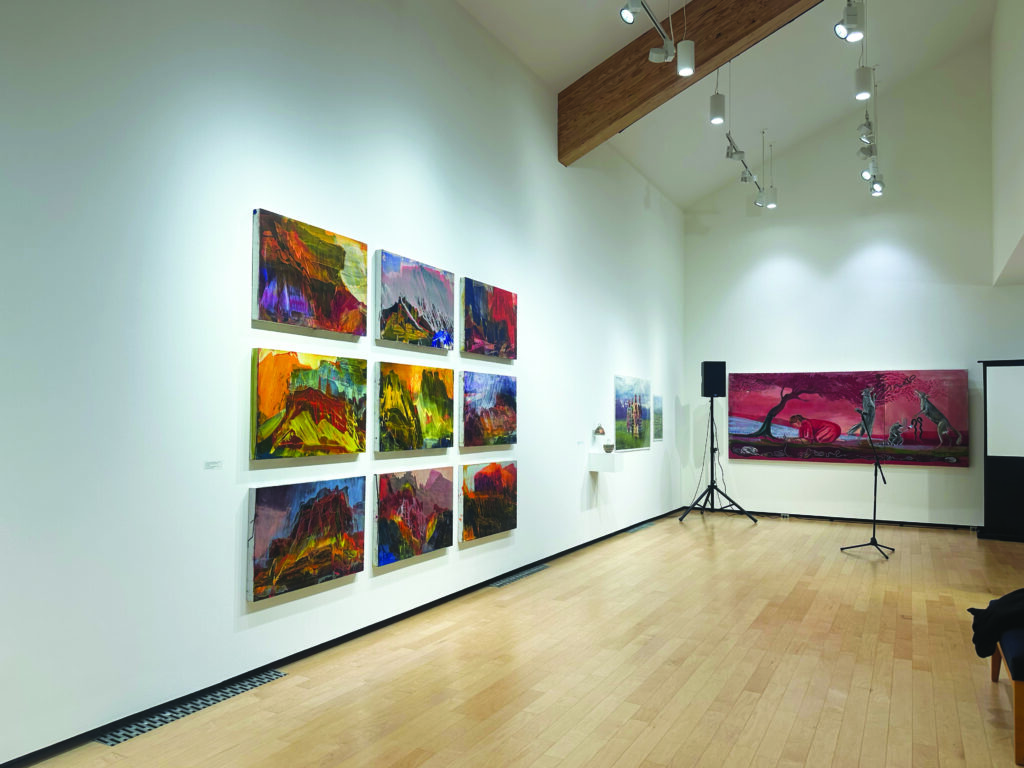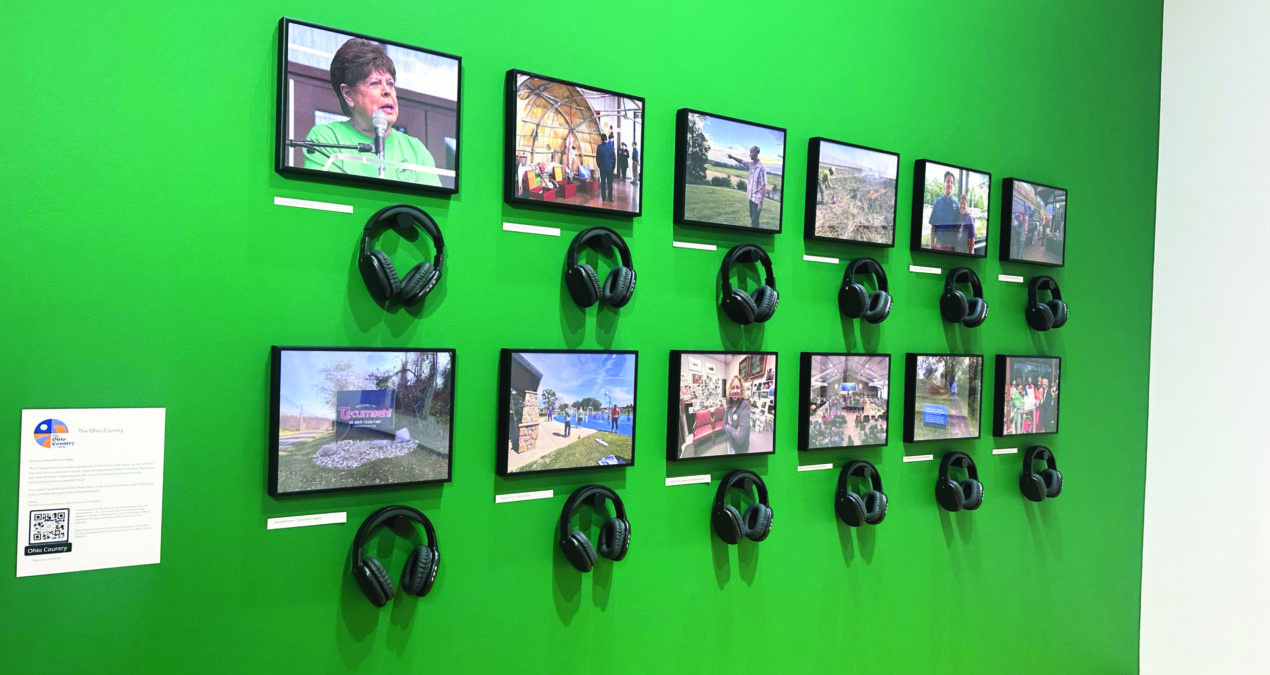Nor Osborne, Features Editor–
At the start of the new semester, the Denison Museum installed its latest exhibit, “Echoes of Ohio’s Indigenous Legacy: Bridging Past and Present.”
The exhibition centers the work of people indigenous to the Northwest Territory, now known as Ohio. The art on display highlights the narratives of those native to the area, exploring the rich history of their people and confronting the displacement and erasure of indigenous tribes.
This exhibit will be open until April 11, 2025. Megan Hancock, Director and Curator of the Denison Museum, commented on the importance of the exhibition.
“When we think about a lot of the history that we are told, whether in K-12 or through the media, it becomes evident that a lot of information is left out, many of the stories that we hear are only from one perspective,” she said. “This exhibition hopefully will allow people to familiarize themselves, not only with some amazing contemporary artists from all over the United States but also begin to familiarize themselves with some of the nuanced history in Ohio.”
Many of the pieces in the exhibit showcase stories close to home. Just 8 miles from Denison’s campus stands the Hopewell Ceremonial Earthworks in Newark, which were named a UNESCO World Heritage site in September 2023. This distinction made the site an internationally recognized and protected landmark, celebrating its cultural significance and beauty. These earthworks were built by those of the Hopewell culture around 2,000 years ago.
Despite the incredible creation the Hopewell culture constructed, much of their history has been erased following their forced removal from the land.
“The emergence of a new World Heritage Site raises a lot of questions,” Hancock said. “How and why does Ohio fit? Why was this named a World Heritage Site, and what is Ohio’s history? When we first started asking those questions, we realized they were very difficult to answer, because we have no First Nations. And why don’t we have First Nations? That opens a whole other world of questions that we hope to discuss in this exhibit.”
The museum connected with a wide variety of scholars from all over the state to curate the series of artwork and educational resources. The exhibit features a wide variety of mediums, including lithographs, screenprints, paintings, ceramics, drawings, photography and a basket in vastly different styles. There is even a wall of headphones that play 12 episodes of The Ohio Country, a podcast that dives into the experiences of the Miami, Shawnee, Wyandotte, and other Indigenous people in Ohio.
“Our contributors were really helpful in allowing us to build out resources and guides so that classes and students and just the general public can learn more,” Hancock said. “I hope people have the opportunity to come down and find a story or piece of work that captures their attention, that they find meaningful to them. It’s not just about what the museum wants, but rather what our community can learn and what our community can get out of these exhibitions. There’s so much to learn, and we are barely scratching the surface.”


